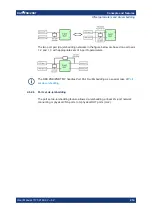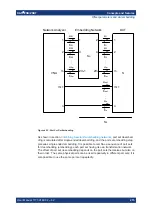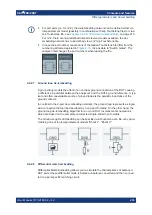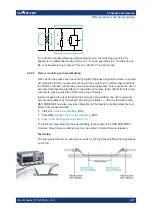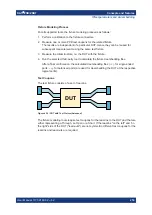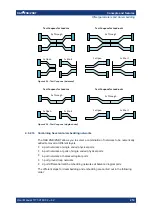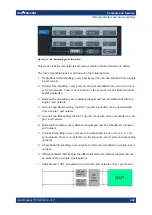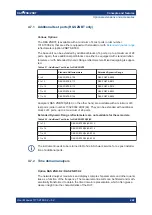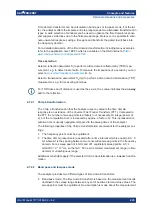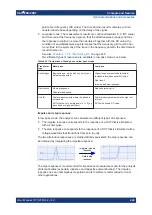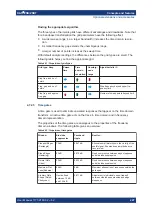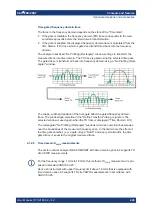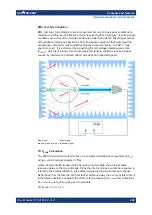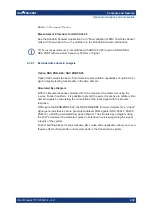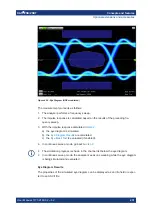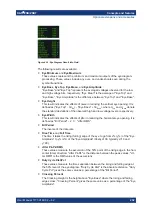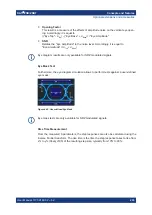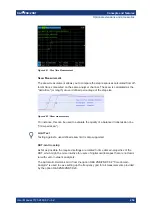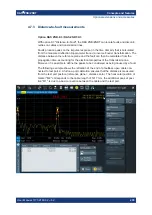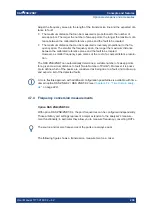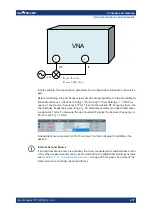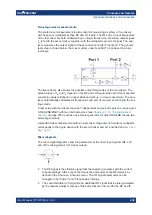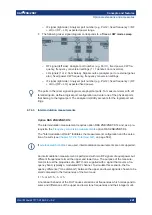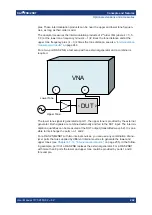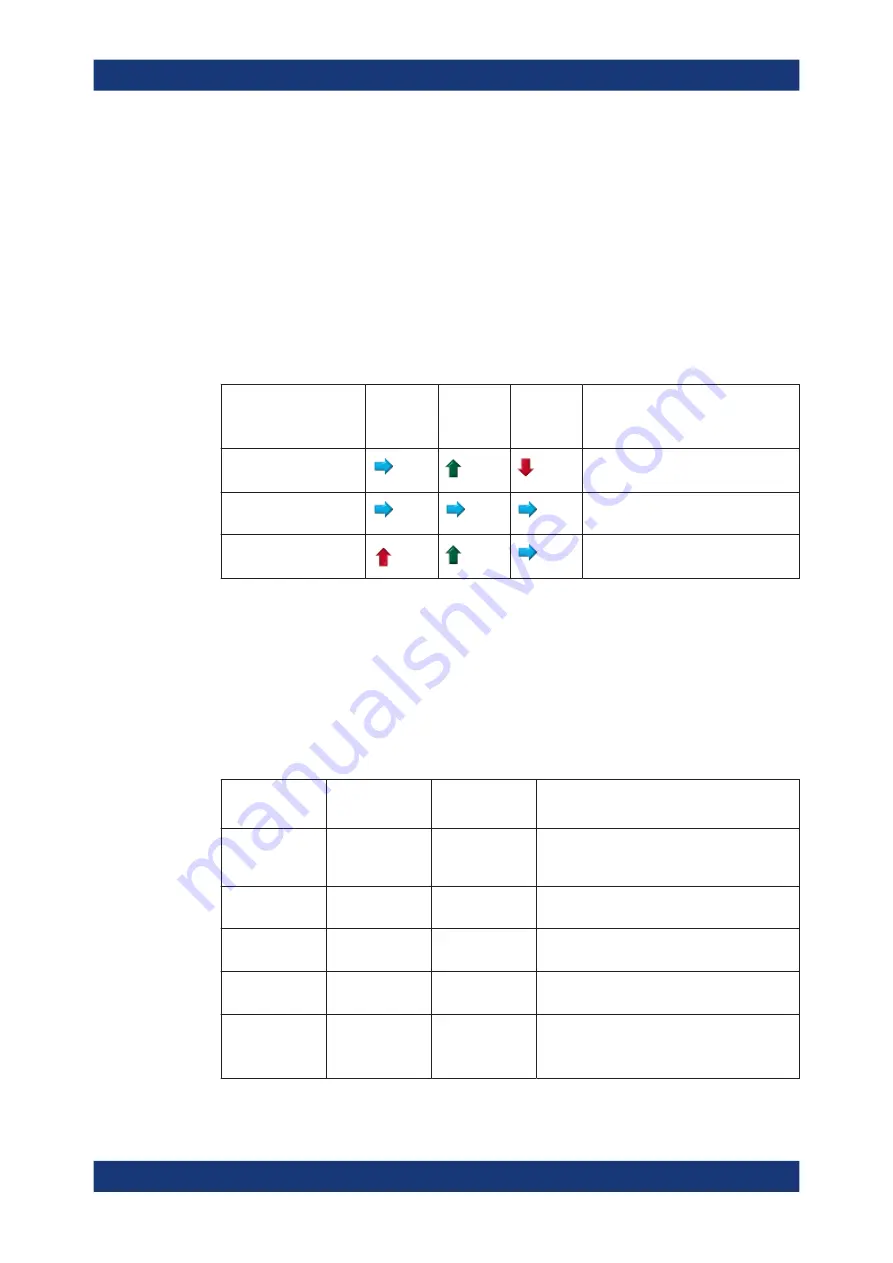
Concepts and features
R&S
®
ZNB/ZNBT
227
User Manual 1173.9163.02 ─ 62
Finding the appropriate algorithm
The three types of harmonic grids have different advantages and drawbacks. Note that
for a bandpass transformation the grid parameters have the following effect:
●
A wider sweep range (i.e. a larger bandwidth) increases the time domain resolu-
tion.
●
A smaller frequency gap extends the unambiguous range.
●
A larger number of points increases the sweep time.
With default analyzer settings, the differences between the grid types are small. The
following table helps you find the appropriate grid.
Table 4-21: Properties of grid types
Grid type: Keep
Sweep
time
Time
domain
resolution
Unambig-
uous
range
Algorithm fails if...
Stop freq. and no. of
points
–
Freq. gap and no. of
points
Stop frequency beyond upper fre-
quency limit
Stop freq. and approx.
freq. gap
Number of sweep points beyond limit
4.7.2.5
Time gates
A time gate is used to eliminate unwanted responses that appear on the time domain
transform. An active time gate acts on the trace in time domain and in frequency
domain representation.
The properties of the time gates are analogous to the properties of the frequency
domain windows. The following table gives an overview:
Table 4-22: Properties of time gates
Window
Side lobe
suppression
Passband
ripple
Best for...
Steepest Edges
(Rectangle)
13 dB
0.547 dB
Eliminate small distortions in the vicinity of the
useful signal, if demands on amplitude accu-
racy are low
Steep Edges
(Hamming)
43 dB
0.019 dB
Good compromise between edge steepness
and side lobe suppression
Normal Gate
(Hann)
32 dB
0.032 dB
Good compromise between edge steepness
and side lobe suppression
Maximum Flat-
ness (Bohman)
46 dB
0 dB
Maximum attenuation of responses outside the
gate span
Arbitrary Gate
Shape (Dolph-
Chebychev)
User defined
between 10 dB
and 120 dB
0.071 dB
Adjustment to individual needs; tradeoff
between side lobe suppression and edge
steepness
Optional extensions and accessories


